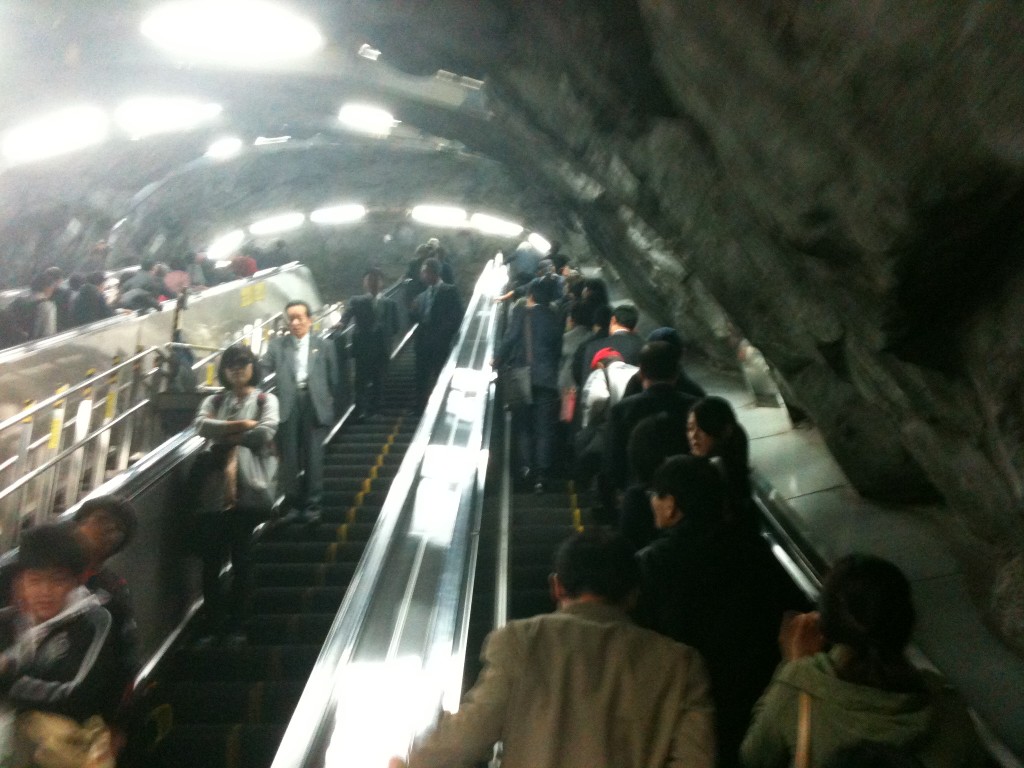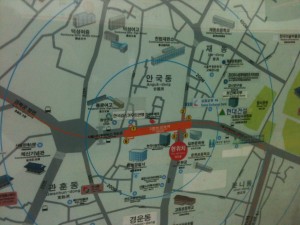A Korean movie In Another Country at the recent Melbourne International Film Festival followed by an amazing Korean banquet with friends, reminded me I have not written about my Seoul experience. So here we go:
Aesthetics: 8.5 out of 10
Seoul is built on the Han River, its plains and is bordered by eight mountains. It is easy to bike, run or walk along the riverside and there are many cafes and restaurants dotted along. In a 2011 survey, over half the population and two-thirds of “urban planning professionals” voted the river as the second most scenic place in the city! I loved it.
The other scenic place I enjoyed is Namsan (South Mountain) Park. The mountain is 262 metres tall. The park there is lovely and there is a cable car up to the top where you will find the Seoul communications Tower at the top. The Tower tops out at 479.7 m (1,574 ft) above sea level and has four observation levels which have been open to the public since 1980. Stunning view. This park was considered in that survey I mentioned, to be the most scenic place in Seoul.
Another of my favourite places was Cheonggyecheon, a 5.8 km creek which flows to the east right through the middle of downtown Seoul. It is an amazing urban renewal story. In the 1950s the creek became heavily polluted and was treated as a rubbish dump. In 1958, the city began to cover over the creek with concrete. Then in 1976 an elevated freeway was built over the top. In 2003, the freeway was dismantled, concrete removed and creek revitalised. It was opened as a linear park in 2005. The effect was amazing. Economic activity around the stream was boosted. There are more birds now. Amazingly, the fresh water of the stream cools the area round by an average of 3 to 4 degrees celsius – a boon on hot days. The removal of the freeway reduced the number of cars entering the area and traffic sped up around the area.
The reduction of traffic is significant for Seoul has a terrible pollution problem. It is one of the worst cities in the world for air quality. To change this, more green space is being introduced, diesel buses retired and fast bus lanes installed. Factories have five years to reduce their pollution by half.
Many also criticise the light pollution of Seoul. All lighting systems of downtown buildings, outdoor art and construction in Seoul are allowed from 30 minutes after sunset until 11 p.m. One issue is the light emitted from crosses on the many church buildings across the city!
Liveability: 5 out of 10
The Global Liveability Survey of 140 cities was released by the Economist Intelligence Unit, a think tank affiliated with the Economist magazine. named Seoul as the 58th best city in the world to live, roughly on a par with London (53rd) and New York (56th). I think that is the right position for the city.
One of the issues is “The city of Seoul is a metropolis that has achieved rapid expansion after the Korean War. But because we focused solely on practicalities, while quickly building the city’s infrastructure we gained a bad reputation and was known as a city of gray concrete”, (Oh Se-hoon, Mayor of Seoul from 2006 to 2010 )
Another is that as a city of 10 million people in an area of 605 km2(234 sq mi), it is very crowded. My city Melbourne has less than half the population in an area 14 times bigger (8806 km² -3400.0 sq miles).
Culture: 9 out of 10
Seoul has an amazing amazing cultural life.
Food is a key part of Korean life. Seoul’s Gwangjang Market, the nation’s first permanent market, it opened in 1905. Officially a cloth and clothing market , it has some of the most amazing street food you will ever see, smell and taste. For more on amazing food check out Streets of Food. Add to this a vast array of amazing local and international restaurants.
Seoul has over 100 museums, including The National Museum of Korea
Crime: 9.6 out of 10
Public Transport: 10 out of 1o
Public transportation is a dream in Seoul. I used to think Paris, Berlin and Madrid ruled the world of Public Transport. Not any more. Apparently, the city government employs mathematicians to build a coordinated subway, bus, and traffic timetable.
Twelve major underground railway lines criss cross the city. They are linked by a complicated but logical colour coded bus system:
- Blue Trunk Buses operate at high speeds in dedicated bus lanes
- Green Branch Buses connect the major subway stations and bus terminals to outer areas
- Red Rapid Buses focus on commuters getting into and out of downtown
- Yellow Circulation Buses connect Bue Trunk bus stops, railway stations and key downtown locations.
All directional signs and announcements about Public Transport seemed to be written in Korean and English. The system was so easy to navigate.
More subway extensions are planned. Korea is clearly looking both at the present and the future for public transport.
“The Vibe” 10 out of 10
There are some cities that just have a buzz. Seoul is one of them. It is a very dynamic city day and night. Some people find the Koreans can be pushy. Maybe because I am tall, I had no negative experiences. Instead I met people who were proud of their city, they got me excited too!
The Verdict: 86.1%
Seoul has got to be one of the best cities I have ever been to. On my top city list it sits at 16th place – tying with New York City in my mind. It is slightly behind Koln (Cologne) at 86.2%.
Related Posts





I was quite excited about visiting Seoul this year but found it really depressing. Though really did mot explore in detail. I would not go back to Seoul, but did find the south coast to be attractive.